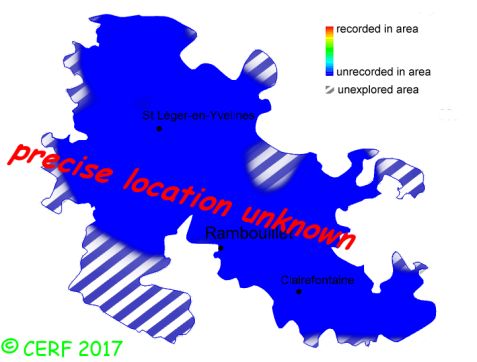|
Gymnopus acervatus (Fr.:Fr.) Murrill
|
common name(s) : Conifer Toughshank
New classification: Basidiomycota/Agaricomycotina/Agaricomycetes/Agaricomycetidae/Agaricales/Marasmiaceae
Former classification: Basidiomycota/Homobasidiomycetes/Agaricomycetideae/Tricholomatales/Marasmiaceae/Collybieae
synonyms: Collybia acervata
(unconfirmed synonyms: Connopus acervatus, Marasmius acervatus)
edibility : inedible
|
|
|
The cap is red-brown to dark brown, with a central umbo; its margin is smooth.
The cap surface is smooth, not viscid nor sticky.
The stem is thin, pinkish-brown, often twisted in old specimens, with white down at the base, without ring.
The flesh is whitish in the cap, reddish brown in the stem, unchanging; its taste is mild or slightly bitter; the odour is unpleasant, of rotten cabbage;
its texture is fibrous.
The gills are whitish, adnate, crowded .
The spore print is white. This species is saprophytic.
It grows on wood (also on the ground, on buried wood), in tufts, in coniferous woods, on stumps or roots of spruce, rarely on beech.
The fruiting period takes place from August to November.
| Dimensions: | width of cap approximately 3 cm (between 1 and 5 cm) |
| | height of stem approximately 6 cm (between 3 and 10 cm) |
| | thickness of stem (at largest section) approximately 4 mm (between 1 and 6 mm) |
Chemical tests : none.
Distinctive features : always in tufts of many specimens
Gymnopus acervatus is rare and confined in the forest of Rambouillet, and is quite rare, more generally speaking
.
|  | | Above : distribution map of Gymnopus acervatus in the forest of Rambouillet |
|
page updated on 14/01/18